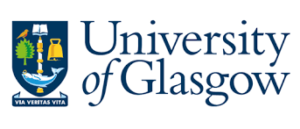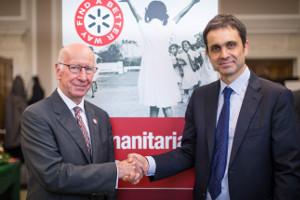 Every year, about 4,300 people are killed by landmines. In 2015, the number of deaths was the highest it had been in a decade. The number of people injured by landmines each year is even greater. Despite demining efforts, there are still 110 million landmines buried in 64 countries, according to UNICEF, and finding and disabling them is a dangerous and costly task.
Every year, about 4,300 people are killed by landmines. In 2015, the number of deaths was the highest it had been in a decade. The number of people injured by landmines each year is even greater. Despite demining efforts, there are still 110 million landmines buried in 64 countries, according to UNICEF, and finding and disabling them is a dangerous and costly task.
We’ve seen technology used in ingenious ways to try to safely decrease the number of landmines in the world, but in the meantime, people are still getting maimed and killed every day. Thanks to a £2.8 million regenerative medicine project taking place at the University of Glasgow, however, the healing and recovery for survivors of landmine explosions may soon get a little easier and less painful.
 Find a Better Way, a foundation set up by football legend Sir Bobby Charlton to aid landmine survivors and reduce casualties, granted the £2.8 million to the university for the purpose of developing 3D printed bone for survivors of landmine blasts. Landmines, though responsible for thousands of deaths, are designed specifically to maim, leaving victims often missing limbs or parts of limbs and requiring reconstructive surgery. That reconstruction is often limited by the amount of bone that can be recovered.
Find a Better Way, a foundation set up by football legend Sir Bobby Charlton to aid landmine survivors and reduce casualties, granted the £2.8 million to the university for the purpose of developing 3D printed bone for survivors of landmine blasts. Landmines, though responsible for thousands of deaths, are designed specifically to maim, leaving victims often missing limbs or parts of limbs and requiring reconstructive surgery. That reconstruction is often limited by the amount of bone that can be recovered.
Many universities and research organizations have been working on developing 3D printed bone, but the method used by the researchers at the University of Glasgow is a little different. Scaffolds are 3D printed and then coated with nanolayers of stem cells and a growth factor known as BMP-2. The coated scaffolds are then placed into a device called a Nanokick bioreactor, which was invented by Professor Matt Dalby. The Nanokick shakes the bone scaffold 15 nanometers, 1,000 times per second, stimulating the stem cells and BMP-2 to interact and begin growing into bone tissue at an accelerated rate.
From there, the team should be able to create custom bone implants for individual patients. Once implanted, the bone will continue to grow, with the scaffold harmlessly dissolving as a strong new bone forms. They will also be developing small blocks of 3D printed bone that can be shipped anywhere in the world for surgeons to cut and shape based on patient needs. Special packaging will be developed that can keep the bone tissue viable for two to three weeks.
“We have been developing various types of bone-related technology at the University of Glasgow for the previous five years,” said project lead Professor Manuel Salmeron-Sanchez. “Thanks to the support of Find a Better Way we can improve and combine these technologies for use in extreme situations where a significant amount of bone is needed urgently. With our interdisciplinary team of bioengineers, biologists and surgeons and the financial support of Find a Better Way we expect efficient progress towards the generation of bone, and we look forward to landmine blast survivors of the future having and improved quality of life.”
The project will originally focus on smaller pieces of bone, but in theory there’s no limit as to how much 3D printed bone can be grafted onto a landmine survivor. If the University of Glasgow team succeeds, they could open up a new door for surgeons working to restore the lives of blast survivors.
The funding agreement was signed earlier today, and the project is scheduled to begin on January 1. A “first man” study is projected to take place in five years.
“It is hard to overestimate what an important breakthrough this could be for landmine blast survivors,” said Lou McGrath OBE, CEO of Find a Better Way. “Advances in reconstructive surgical techniques now encourage trauma surgeons to retain as much of a limb as possible instead of quickly amputating above the knee. In many cases, the amount of bone that can be recovered is a limiting factor in how much of a leg or arm can be salvaged. With the developments from this project, we could reach a situation where it is only the limitations of surgical techniques, not the amount of viable tissue remaining, that determines the outcome.”
Discuss in the University of Glasgow forum at 3DPB.com.
[Source: University of Glasgow]Subscribe to Our Email Newsletter
Stay up-to-date on all the latest news from the 3D printing industry and receive information and offers from third party vendors.
You May Also Like
Further Understanding of 3D Printing Design at ADDITIV Design World
ADDITIV is back once again! This time, the virtual platform for additive manufacturing will be holding the first-ever edition of ADDITIV Design World on May 23rd from 9:00 AM –...
3D Printer Maker EVO-tech Reborn as NEVO3D — Once More With Feeling
EVO-tech was a 3D printing service and original equipment manufacturer established in 2013 and based in Schörfling am Attersee, Austria. The company produced high-quality material extrusion systems featuring linear bearings,...
3D Systems Brings 3D Printed PEEK Cranial Implant to the U.S. with FDA Clearance
For more than 10 years, 3D Systems (NYSE:DDD) has worked hand-in-hand with surgeons to plan over 150,000 patient-specific cases, and develop more than two million instruments and implants from its...
CDFAM Returns to Berlin for Second Annual Symposium
The second CDFAM Computational Design Symposium is scheduled for May 7-8, 2024, in Berlin, and will convene leading experts in computational design across all scales. Building upon the first event...

































